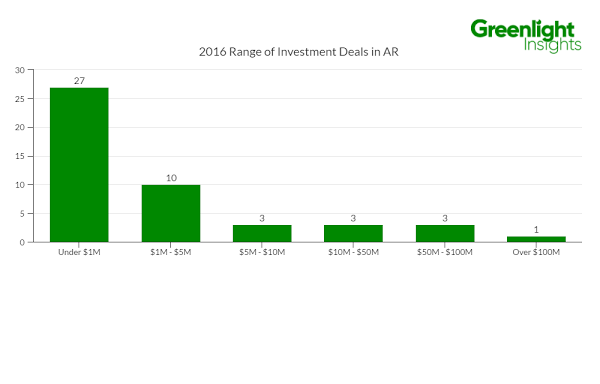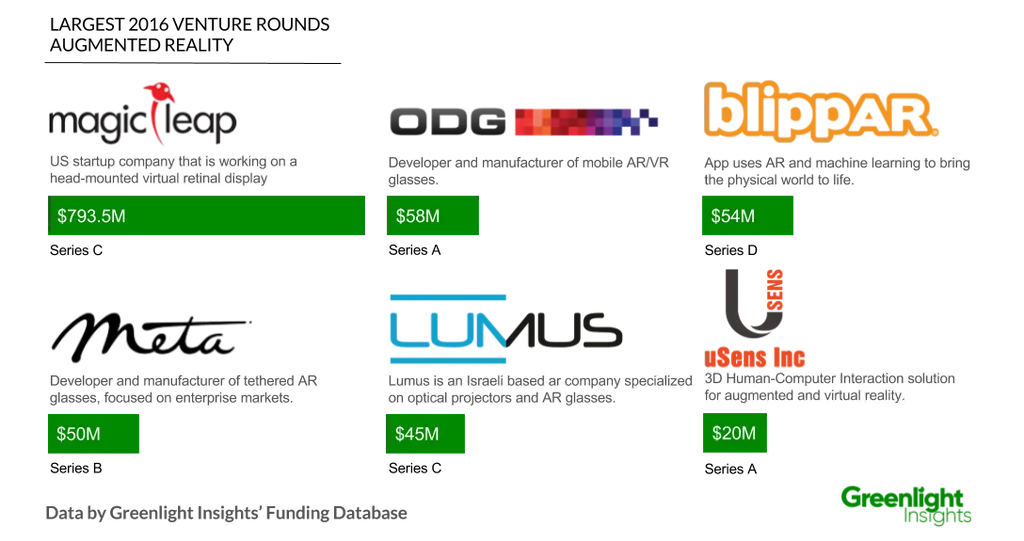VR and AR saw a record breaking year in 2016. Venture capitalists invested a total of $1.07 billion in AR companies, which is over four times the total of 2015 investments.
According to Greenlight Insights’ funding database, AR saw a large total in funding investment, reaching over $350 million more than VR investments. AR venture funding is currently lead by large investments from Magic Leap, ODG and Lumus, with the the top six companies totally $1 billion in venture capitalist funds. This is 90% of total AR funding. This includes the $793.5 million funding investment round from Magic Leap. Without Magic Leap’s huge Series C investment round, venture capitalists invested over $272 million in AR companies.
This signifies a young industry. Magic Leap was the stand-out deal of 2016 and also an outlier. A majority of investments were under $1 million and in early funding rounds with only six investment rounds being a Series B or later. The AR industry will continue to grow as companies seek later stage funding in coming years.
 In relation to industry funding leaders and later stage funding, hardware has seen the most funding, with $960 million compared to $105 million for software funding. Of software, non-entertainment saw $85 million of venture capitalist investment in 2016 compared to $13.6 million total investment funding of games and entertainment combined. This displays a difference between VR and AR: non entertainment companies are seeing more investment funding than consumer-centric products and content. Enterprise and non-entertainment will be key to making AR succeed. Health care, education and industrial applications are seeing the main investment as there is a clear return on investment as AR can aid in company procedures.
In relation to industry funding leaders and later stage funding, hardware has seen the most funding, with $960 million compared to $105 million for software funding. Of software, non-entertainment saw $85 million of venture capitalist investment in 2016 compared to $13.6 million total investment funding of games and entertainment combined. This displays a difference between VR and AR: non entertainment companies are seeing more investment funding than consumer-centric products and content. Enterprise and non-entertainment will be key to making AR succeed. Health care, education and industrial applications are seeing the main investment as there is a clear return on investment as AR can aid in company procedures.
This can also be attributed to a lack of content being created. Developer relations and resources help developers easily create and publish content. Developers will need more support and access to SDKs to create successful content fit for an emerging technology.
As AR is still in it’s infancy and years off of consumer adoption, manufacturers and developers will need to work together to grow AR as a legitimate platform.


























